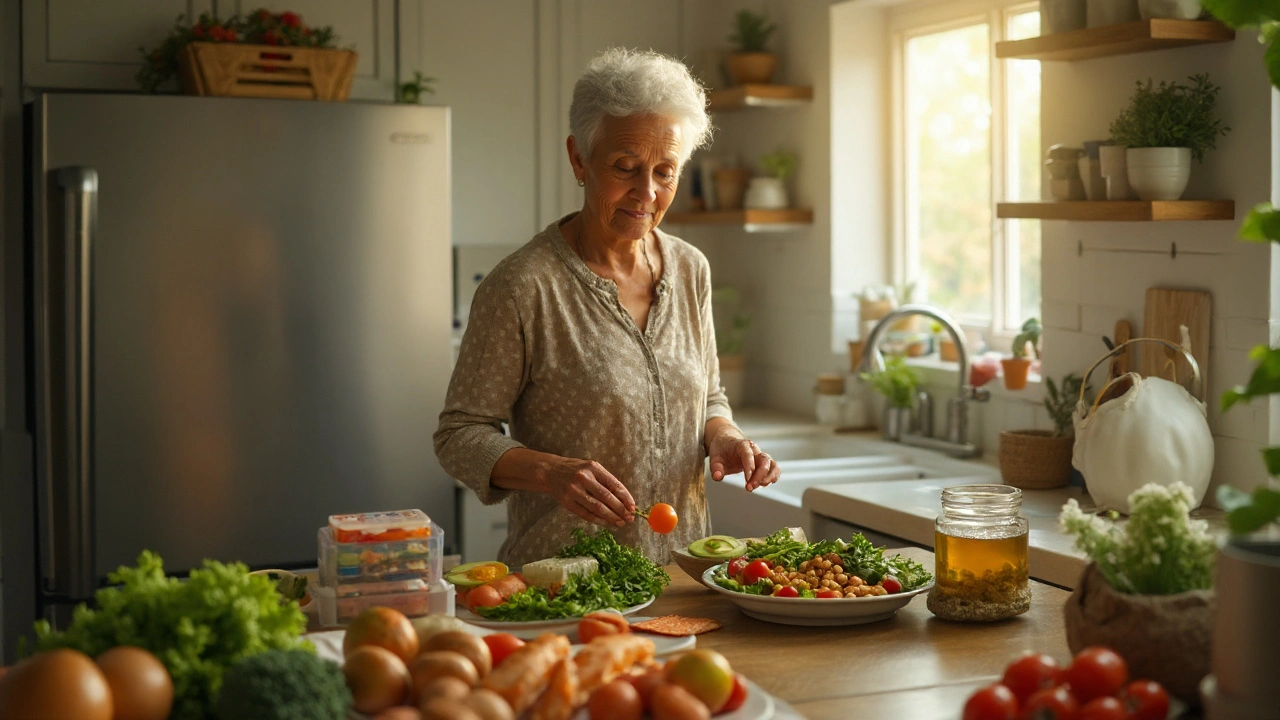
DVT Diet: Simple Food Choices to Lower Clot Risk
If you’ve heard about deep vein thrombosis (DVT) and wonder if what you eat can help, the answer is yes. A few everyday foods can keep blood flowing smoothly, while other choices may tug the brakes on your veins. Below you’ll find easy ideas you can add to meals right now, plus a quick look at what to skip.
What to Eat for Better Blood Flow
Start with omega‑3 rich foods. Fatty fish like salmon, mackerel, and sardines bring EPA and DHA, which thin the blood a bit and calm inflammation. If you don’t like fish, try a tablespoon of ground flaxseed or chia seeds in your cereal or smoothie.
Load up on colorful fruits and vegetables. Berries, oranges, and leafy greens are packed with vitamin C and flavonoids that protect blood vessel walls. One cup of broccoli or a handful of spinach each day gives you fiber, potassium, and antioxidants that all work together to keep clots at bay.
Don’t forget whole grains. Oats, brown rice, and quinoa deliver soluble fiber that helps lower cholesterol, a known factor in clot formation. Swap white bread for 100% whole‑grain versions and you’ll add a steady stream of nutrients without extra sugar.
Stay hydrated. Drinking enough water keeps the blood from getting too thick. Aim for at least eight glasses a day, and up the count if you’re active or live in a hot climate.
What to Avoid
Cut back on processed meats and high‑sodium snacks. Too much salt raises blood pressure, which strains veins and can speed up clot development. Choose fresh cuts of meat or plant‑based proteins instead.
Limit foods high in trans fats and saturated fats, like fried fast food, commercial baked goods, and certain margarine spreads. These fats raise bad cholesterol and make platelets stickier.
Sugar overload can raise triglycerides and promote inflammation. Keep sugary drinks, candy, and desserts to occasional treats rather than daily staples.
Alcohol should be enjoyed in moderation. While a glass of red wine might have some heart‑healthy benefits, excess drinking thickens blood and raises clot risk.
In addition to food, a few lifestyle tweaks boost the diet’s effect. Keep a healthy weight; extra pounds put more pressure on leg veins. Move around frequently—short walks every hour prevent blood from pooling in the lower legs. If you sit a lot, try ankle pumps: flex your feet up and down for 15‑20 reps every hour.
Putting these simple steps into your routine doesn’t require a total overhaul. Pick two or three changes this week—maybe swapping a snack for a fruit and adding a fish dinner—and notice how easy it feels to protect your veins. Your body will thank you with better circulation and a lower chance of a painful clot.
